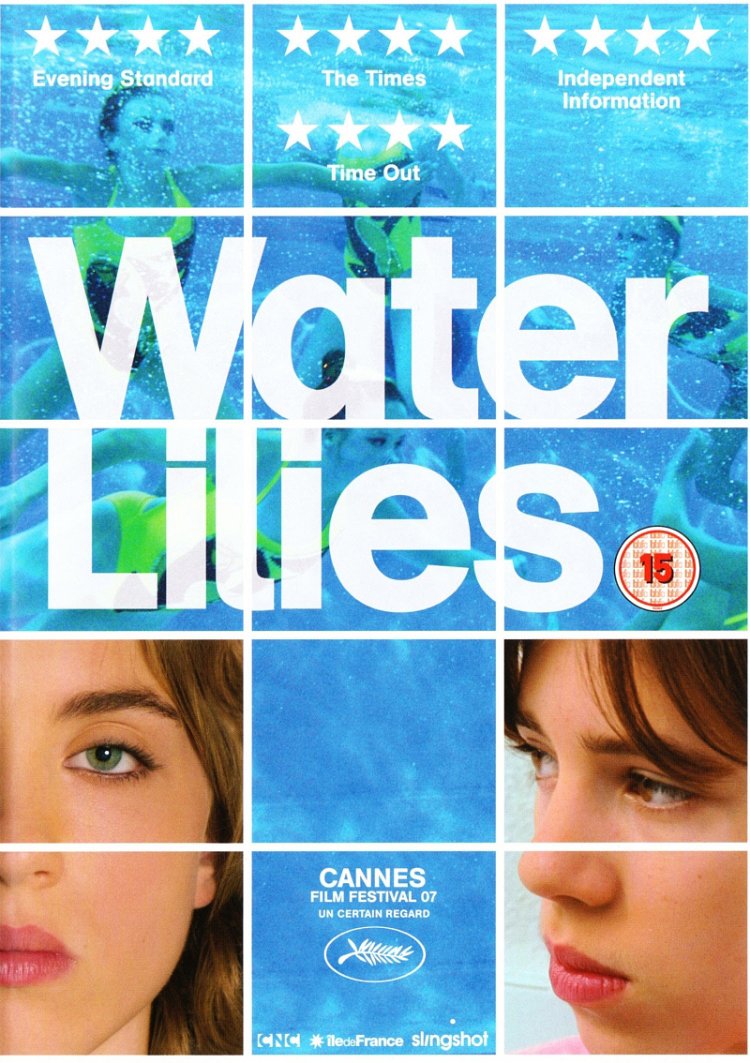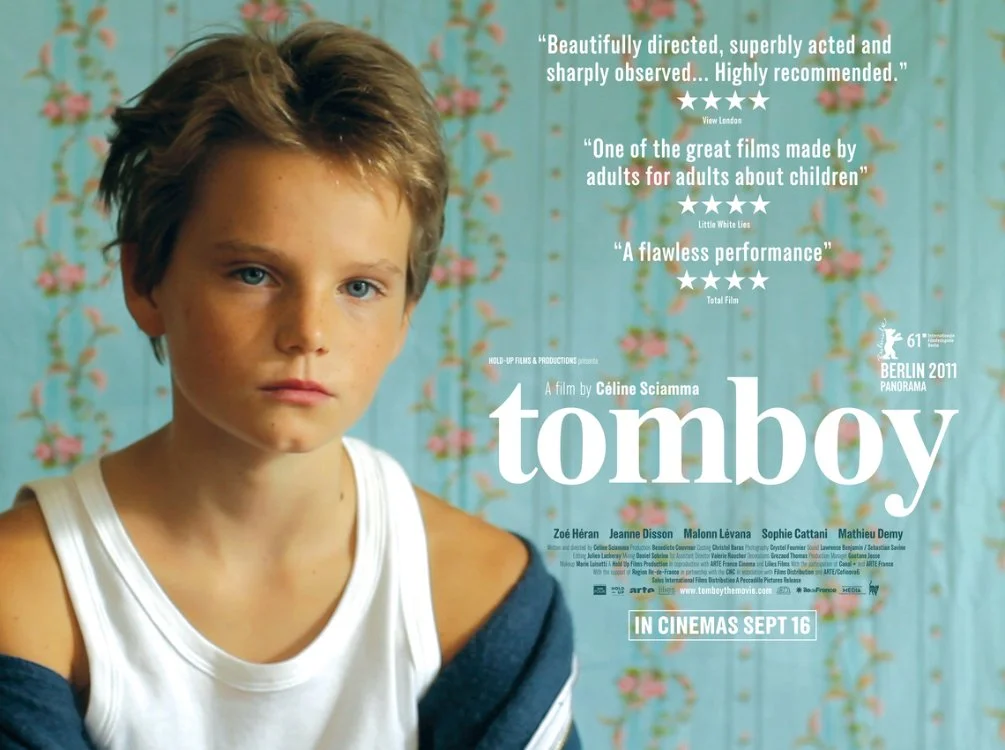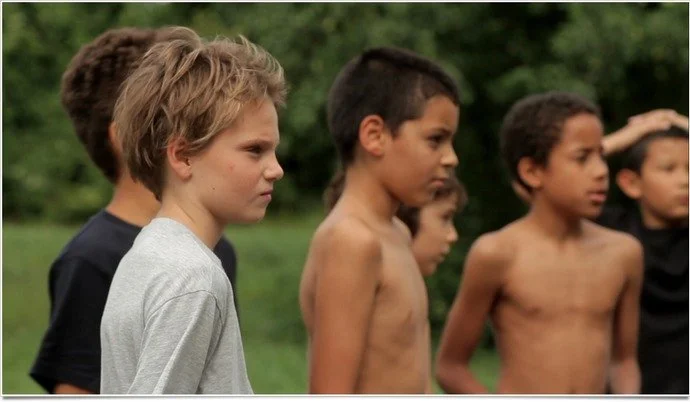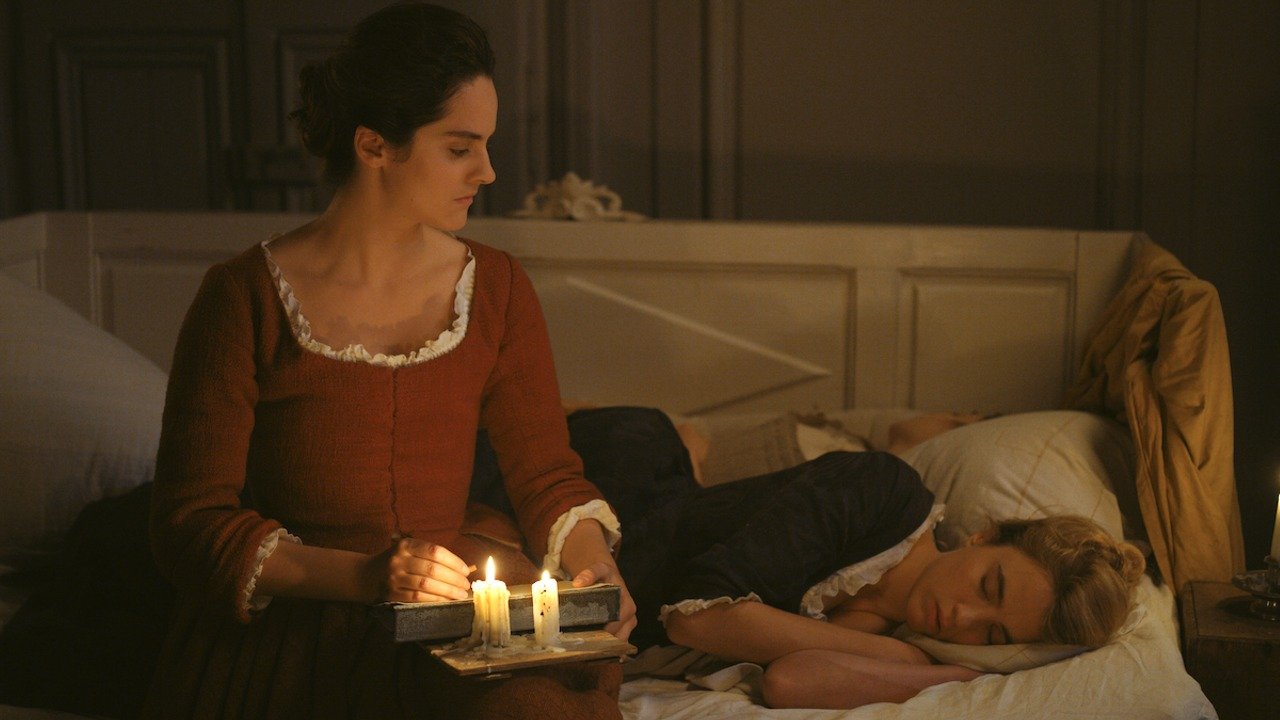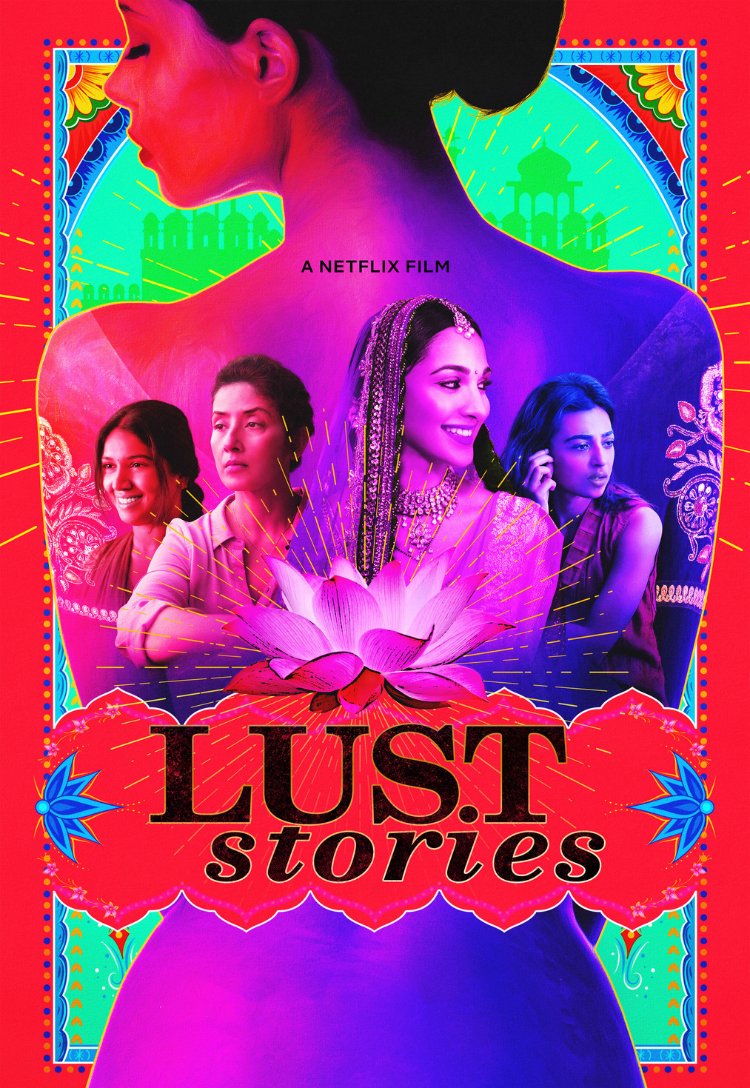Celine Sciamma’s Mesmerising Film Universe of Art, Love and Fantasy
French Director Celine Sciamma does not shy away from telling stories about real life and real people. The writer and director of films like Portrait of a Lady on Fire, Waterlilies, Tomboy, and Girlhood – which tenderly explore themes of sexuality, gender identity, childhood, and love, always manages a fluidity that only she can execute effortlessly. Raised in Cergy-Pontoise, North-west of Paris, Celine’s films feel undeniably French, offering a cool dissection of everyday life experiences, where her simple yet provocative approach to storytelling helps us escape boring suburbia’s, societal pressures and even the world as we know it.
Waterlilies (2007)
Celine’s debut feature makes us the prime observers through the awkward gaze of main character Marie as she desperately tries to join a synchronised swimming team and win the heart of lead swimmer Floriane. Set in a monolithic Paris suburb, an exhilarating queer story is hidden behind the shiny façade of young, lithe, and sensual female athletes. At first glance the polished hair, poised faces and aerodynamic routines are aesthetically appealing, until we peel back more layers exposing the discomfort of a staunch heteronormative time in Paris. A time which pits young women against each other, and the helpless men born to simply lust after them. Waterlilies gives us an intimate view of the competitive world of synchronised swimming marrying themes of girlhood, sexuality, and naivety into a remarkable and compelling queer love story.
Viewing at times feel voyeuristic as we become privy to the private and occasionally squeamish fumbles of young love, witnessing the bond forming between Floriane and Marie. The escapades of other important supporting characters like Anne and Francois are also valid as they equally partake in this lust for intimacy. Yet, once we take off the romanticised lens of Marie, we see a harsh reality where all that glitters isn’t gold. In one way, Celine leaves it up to us to infer what these characters truly desire even though their harsh reality has already decided their fates. And with the film’s title reference to Claude Monet’s waterlilies, we can view these teenagers like beautiful canvases, just as flawed as the world they inhabit.
(Watch on Mubi)
Tomboy (2011)
Tomboy is a free-flowing film where agency is given to our beloved character Laure, played by actress Zoé Héran, who has a distinctively gamine charm that made her tomboyish role a match made in heaven. At some points we may question if there was a script at all, as the performances are naturally compelling and admittedly for two thirds of the film, we mostly see children playing and interacting blissfully. Soon Laure begins taking on the alias of Mickaël, fitting into the pronoun of ‘he’ and the possibilities of what a boy is and could be. Here, Celine gifts us with the unique theme of boyhood seen through a special lens of someone who wasn’t born as one. Another theme presented is nature with its biological and symbolic aspect compounding as a safe space for Laure’s freedom of expression. Finally, identity makes its mark in relation to Laure, Mickaël and the duality of their existence within family, friendships and society.
As we observe Mickaël’s transition into Boyhood they begin to adopt mannerisms which we attribute as typical masculine behaviour, seen through their reflections in mirrors where the darkness is almost suffocating them in the shadows. Trouble is always alluded to but doesn’t take place until much later. When we see a third reflection of Mickaël they are wearing blue, a more certain colour suggesting that there is trust in how they see themselves in the world. The significance of blue is that it also blends in with the sapphire-green forest that the children find euphoria in, highlighting the biological aspect of nature and how Mickaël’s gender expression is as valid as any ‘real’ boy’s. We cherish moments with Mickaël’s family too, where their tomboy expression is accepted but perhaps a little concerning for their mother who is ironically pregnant with a boy. Perhaps this is signalling a rebirth of Laure’s femininity and how it has evolved into a safe space for her masculine presentation as Mickaël. Ultimately, this idea of push and pull, darkness and light, toys with the dilemmas of parenting, childhood, and gender dysphoria, making Tomboy an educative, inspirational but perhaps depressing tale.
(Watch on Mubi and Amazon Prime)
Girlhood (2014)
Celine serendipitously strikes a third youth trilogy in 2014, giving the spotlight to four black girls who are hustling in the underbelly of Paris, ostracised from a society that renders them almost invisible. Marieme, played by burgeoning actress Karidja Touré, is a teenager navigating a hard life and until she meets her surrogate family, Lady, Adiatou and Fily, does she begin to come into her own. Her newly found confidence and friendships leads us further into the labyrinth of the story, which is depicted through subtle changes of posture, clothing and even hair, hair especially being a universal monopoly of black girlhood and identity. Celine does her very best to simultaneously showcase the real, haunting prospects of young, black people in Paris and the many challenges they face including, racism, lack of educational support, and crime. Other themes equally explored include control, domestic abuse and violence which showcase Marieme’s hellish life.
Despite all, there is ‘black girl joy’, whether It’s the girls laughing in the streets or dancing in a hotel room under blue lighting to Diamonds by Rihanna. Here the blue light liberates the young girls, even just for a moment, showcasing their otherworldly beauty, in contrast to yellow in other scenes which suppresses this joy, signifying danger and fear. Still, these tender moments and more, splashes on-screen gems of friendship and how often the support systems in our youth are the real foundations that often shape the women we see and aspire to be. Celine uses clever motifs of Marieme walking into pivotal scenes by herself, most times her back facing us. This gives us the false sense of confidence that we are part of her journey but ultimately Marieme oversees her own destiny. Notwithstanding the persistent theme of terror, we soon realise the only sanctuary Marieme has is admittedly her youth, and before she transitions into being a woman she must fight for a clearer path. The importance of Girlhood is that Marieme breathes through many black girls as her hope whilst fighting for survival is universally relatable.
(watch on Mubi and Amazon Prime)
Portrait of a Lady on Fire (2019 )
Set in 18th century Brittany, this masterpiece of love transcends time. Though these characters, Héloïse played by Adèle Haenel, and Marianne (Noémie Merlant) embark on a love story, there is nothing cliché about how they make their first steps. Héloïse is a spontaneous ball of energy who is equally stubborn, wanting to avoid her inevitable betrothment to a wealthy Milanese suitor. This of course requires her to have her portrait painted for the engagement to commence which she repeatedly rejects. However, the real flirtation happens when Héloïse gazes at Marianne, the painter hired to paint Héloïse from memory, posing as her accompaniment on walks. This gaze from subject to artist is the perfect contradiction to modern dating where, in the hopes of attracting love, foundations often begin on white lies. However, in this periodic tale, once some truth is uncovered their cosmic attraction begins to flourish; subtle glances grow into longer stares and the two women begin to see each other. Themes explored in this film include, art, the female gaze, love, death, memory, mythology, and sisterhood.
What makes this film so special is how it blends in history with mythology to induce a cerebral journey. With an airy feel, and decadent use of colour thanks to cinematographer Claire Mathon, the newness of falling in love is encapsulated over time. For example, the nuances of the ‘waiting game’ when getting to know someone is amplified through the slow breathy dialogue between Héloïse and Marion during vibrant days. The choices made by the couple to unveil each other’s truth is symbolised by the steps taken to create the portrait, all whilst Heloise’s marriage looms over like a dark cloud. The tragic reference to Orpheus and Eurydice, creates a conversation between mythology, memory and how the beginnings and endings of love are often the most painful aspects of life. Portrait of a Lady on Fire is a masterpiece because it Is a real-life meditation on the female gaze in art; a female artist (Celine) directing her female subjects (Adèle and Noémie) who also become the artists, then making themselves and in turn us, the audience, define what love truly is and if it is in fact enough.
Portrait of a Lady on Fire 2019 (Watch on Mubi)
…
In Celine’s filmography you never quite feel like taking a backseat because at a certain point the characters invite you so close into their existence that you become a part of them. Capturing the essence of sincerity makes Celine one of the most ground-breaking directors of the last two decades. Though her work isn’t particularly haunting, it never leaves you the same as before - the glass being half-full waiting for her next story to feed our souls.


